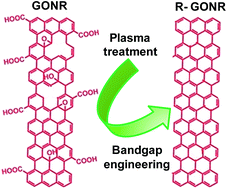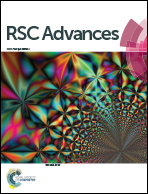Toward bandgap tunable graphene oxide nanoribbons by plasma-assisted reduction and defect restoration at low temperature
Abstract
Simultaneous reduction and defect restoration of graphene oxide nanoribbon (GONR) via plasma-assisted chemistry is demonstrated. Hydrogen (H2) and methane (CH4) gases are continuously dissociated in a plasma to produce atomic hydrogen and carbon-containing ions and radicals carried by the gas flow to react with and remove oxygen functional groups from GONR films. Detailed material characterization confirms that the synergistic effect of simultaneous reduction and defect restoration of GONR occurred during the H2/CH4 plasma treatment. Extensive optical transmittance measurement suggests that the optical energy gap of the as-treated reduced GONR (r-GONR) can be engineered by controlling the plasma exposure time. Systematic electrical measurement indicates that the electrical conductivity of as-treated r-GONR can be enhanced after H2/CH4-plasma treatment. The unique H2/CH4-plasma reduction with characteristics of short process time, high purity, and low temperature compared with conventional thermal and chemical reductions suggests that this nonequilibrium chemical approach can be used for industrial-scale reduction of GONR and graphene oxide (GO).



 Please wait while we load your content...
Please wait while we load your content...